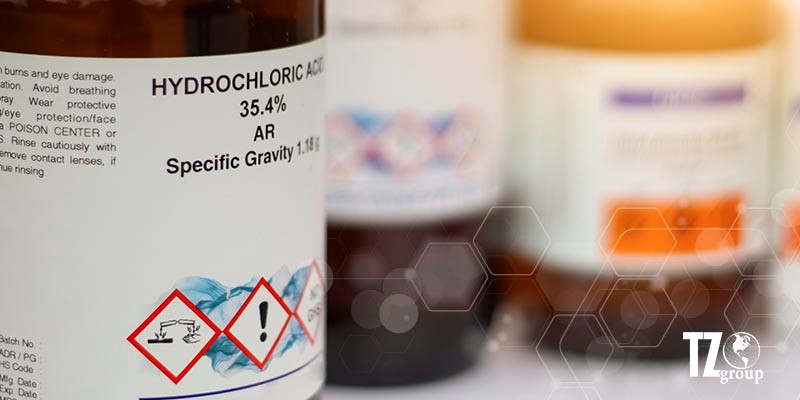When it comes to industrial-grade chemicals, the reaction between hydrochloric acid and sodium hydroxide is one of the most powerful and it plays a key role in industrial processes.
Not only this reaction has numerous advantages, it is widely used in a variety of applications as well, from pH balance maintenance to water treatment.
In this blog post, we’ll discuss what happens when these two chemicals react with each other, their various uses and applications, and the properties that make them so beneficial.
Hydrochloric Acid and Sodium Hydroxide
Hydrochloric acid (HCl), also known as muriatic acid, is a colorless solution created when hydrogen chloride gas dissolves in water. It is most used for industrial purposes such as cleaning or pickling metal surfaces and adjusting pH levels.
Sodium hydroxide (NaOH), also known as lye or caustic soda, is a highly alkaline substance used in the manufacturing of soaps, paper products, and other everyday items.
When HCl meets NaOH, an exothermic reaction occurs that produces a neutralization reaction. This neutralization reaction results in the formation of two new compounds: sodium chloride (salt) and water. It also produces a weak alkaline solution that can be used for cleaning purposes or neutralizing acids. When combined with other compounds, this reaction can create more powerful alkalis such as caustic soda or lye.
Depending on the concentrations of both compounds, this reaction can be very violent; for this reason, it is important to exercise caution when combining these two compounds.
Uses & Applications
The most common use for the reaction between hydrochloric acid and sodium hydroxide is in water treatment. As we mentioned before, the chemical produced by this reaction is sodium chloride (NaCl), which helps to keep water clean by removing impurities and contaminants from it. Additionally, sodium chloride can be used to soften hard water, making it easier to drink or use for other purposes.
In addition to its use in water treatment, sodium chloride also has several other uses in industry. It can be used as a preservative in food production, as well as in the manufacture of detergents, electrolytic cells, batteries, electroplating, soaps, etc. It is also used as an antifreeze agent to help prevent corrosion in pipes and other parts of machinery.
Finally, it can be used as a fertilizer or soil conditioner to improve soil fertility.
Advantages of the Reactions
The primary advantage of this chemical combination is its ability to regulate pH levels quickly and efficiently. It can be used to adjust alkaline levels in soil or water to create the ideal conditions for crop growth or fish health. It also helps maintain neutral pH levels in swimming pools by removing contaminants that can cause an imbalance.
Furthermore, because both hydrochloric acid and sodium hydroxide are widely available chemicals with relatively low costs, they are a cost-effective solution for many industries.
In addition to its practical benefits, this reaction has several environmental advantages as well.
Its use helps reduce the amount of hazardous waste generated by certain processes since it can be recycled over several cycles without significant degradation or loss in performance quality. As a result, using this reaction reduces the number of pollutants released into the environment significantly compared to other solutions such as chlorine gas or bleach-based products.
Looking for a provider?
The combination of hydrochloric acid and sodium hydroxide offers multiple benefits for industry leaders looking for efficient solutions to their chemical needs. Their ability to clean without causing damage to metal surfaces makes them perfect for a variety of industries from wastewater treatment to manufacturing processes like electrolysis or electroplating.
Those looking for reliable chemicals need look no further than TZ Group – contact us today if you would like more information on how we can provide you with these great industrial chemicals!


